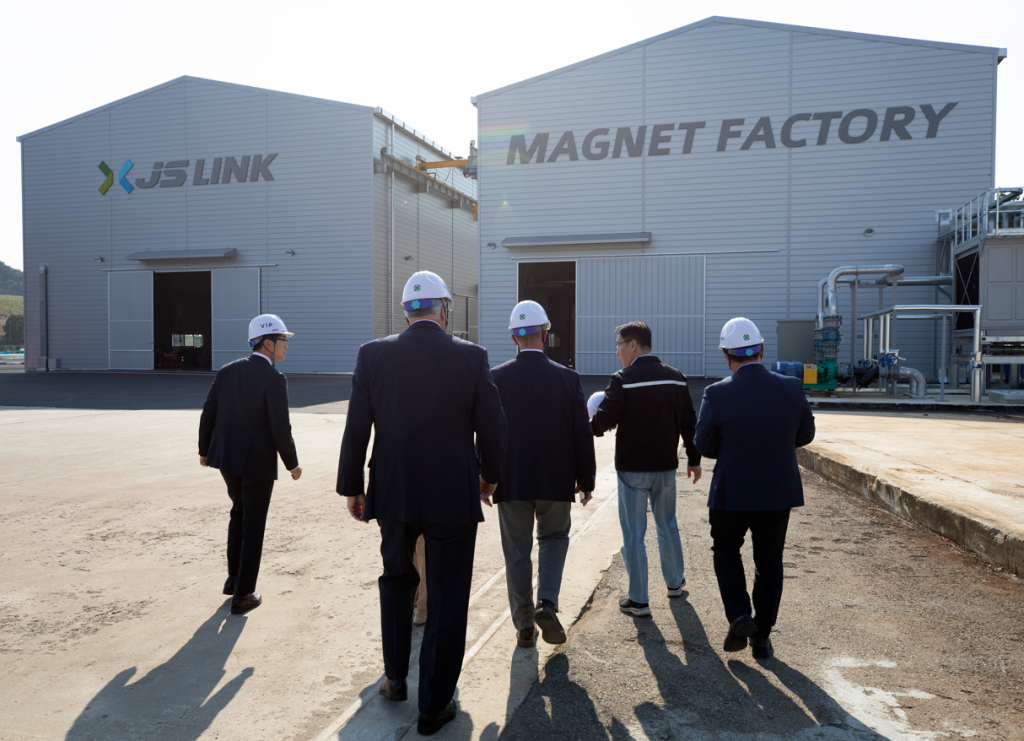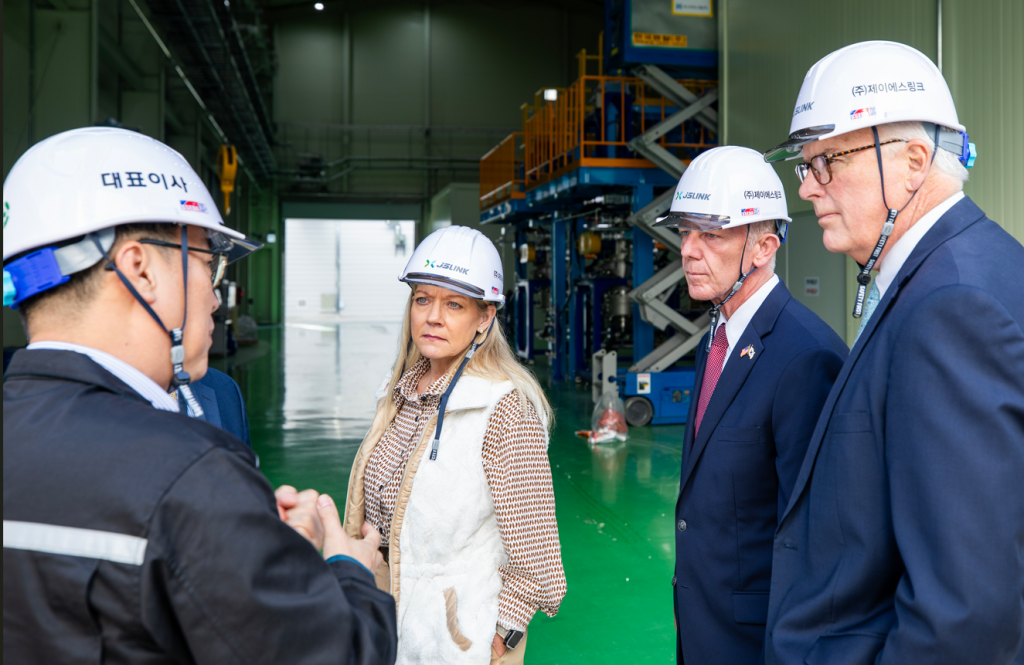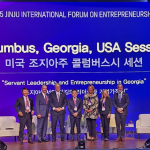On October 29, 2025, Mayor Skip Henderson and the Choose Columbus team visited JS Link’s Yesan Magnet Plant in South Korea, following the company’s announcement of a significant new investment in the United States. During the visit, the Columbus delegation met with JS Link’s executive leadership, including CEO Jun Y. Lee, JS Link America Inc. CEO Junbeom Park, and General Manager Jeehoon Park, for a tour of the company’s state-of-the-art magnet manufacturing facilities and detailed discussions about the upcoming Columbus, Georgia project.

JS Link has announced plans to invest $223 million to build a rare-earth permanent magnet manufacturing facility in Muscogee Technology Park in Columbus. According to the company, the new U.S. site will mirror the advanced production lines currently operating in Yesan and will help establish a reliable North-American supply chain for rare-earth permanent magnets — a critical component for electric vehicles, wind turbines, and defense technologies.
During the tour of the Yesan facility, CEO Jun Y. Lee provided an in-depth look at the company’s fully integrated magnet-manufacturing process — from refining rare-earth oxides to producing finished NdFeB magnets.
He also shared insights into current market conditions, emphasizing that over 90% of high-performance permanent magnets are currently produced in China, prompting the U.S. and its allies to prioritize the development of domestic and allied-based supply chains. Lee noted the rapidly growing demand driven by the electric-vehicle and renewable-energy sectors, while also outlining key industry challenges — such as securing reliable rare-earth feedstock, scaling production to commercial volumes, maintaining consistent product quality, and integrating advanced manufacturing and assembly technologies.
By establishing the new facility in Columbus, Georgia, JS Link aims to capitalize on the region’s skilled workforce and training resources — including Columbus State University, Columbus Technical College, and the Muscogee County School District — along with strong state and local economic development support, to create a lasting competitive advantage.
Lee described his vision to make Columbus, Georgia the “Permanent Magnet Capital of America,” positioning it as a hub for advanced materials, research partnerships, and clean-energy manufacturing.
Missy Kendrick said she and Mayor Henderson were “deeply impressed by CEO Lee’s passion and technical vision to build the world’s best magnet operation and by JS Link’s commitment to quality, innovation, and community partnership.”

Mayor Henderson said the facility would “not only benefit the workforce here in Columbus, but throughout the entire region,” highlighting the high-quality career paths in manufacturing, engineering, production, and administration.

This investment by JS Link represents a significant step in reshoring and strengthening U.S. capability in permanent magnet manufacturing — a sector foundational to electric vehicles, renewables, robotics, and defense. With the visit by Missy Kendrick and Mayor Henderson, the company signaled its commitment to both the local region (Columbus, GA) and the broader strategic supply-chain mission. The planned facility looks to make Columbus a central node in the U.S. permanent-magnet ecosystem.
The Fully Integrated Permanent Magnet Manufacturing Process
The process begins with mining ore from the ground, which is then crushed and concentrated to extract rare-earth minerals. The ore undergoes a series of chemical treatments to remove impurities. Through steps such as roasting, leaching, and solvent extraction, each rare-earth element is separated and refined to produce pure rare-earth oxides.
These oxides are then chemically reduced to create pure rare-earth metals. The metals are melted and combined with iron, boron, or cobalt to form magnet alloys, such as NdFeB (neodymium–iron–boron) or SmCo (samarium–cobalt), resulting in solid alloy ingots.
Next, the alloy is crushed and milled into an ultra-fine powder, which is aligned in a magnetic field so that all grains are oriented in the same direction. The powder is then pressed into shape and sintered—a high-temperature process that fuses the particles together to form a dense, durable permanent magnet.

After cooling, the magnet is machined to its final dimensions. For high-performance grades, such as 45UH and above, that require enhanced intrinsic coercivity, a grain boundary diffusion process is employed. In this step, heavy rare earth elements like dysprosium (Dy) and terbium (Tb) are uniformly diffused along the magnet, significantly improving resistance to heat and external magnetic fields. Following this, a protective coating (like nickel or epoxy) is applied to prevent corrosion. Finally, the magnet is placed in a strong magnetic field, which permanently aligns its internal structure.

The company tests strength, durability, and heat resistance before shipping.



